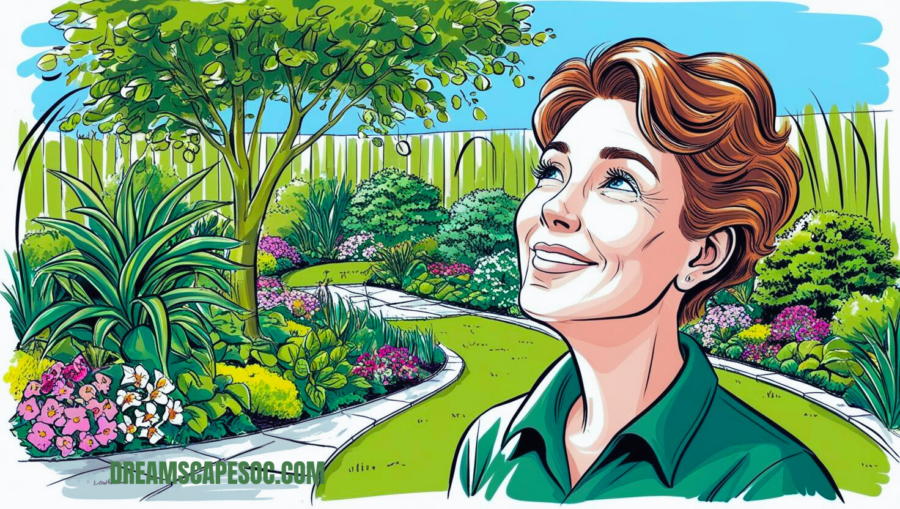Grow & Brew: Climate-Resilient Herbs for Herbal Tea Bliss
Are you imagining an eco-friendly, luxuriant garden full of fragrant herbs that are ready to complement your teas? Climate change, water shortages, and the demand for low-maintenance solutions are some of the issues that many gardeners deal with. However, you can build a sustainable space for growing, brewing, and drinking your own herbal teas with a little forethought and the appropriate selection of climate-resilient plants. We’ll go over useful advice and creative inspiration in this guide to help you create a tea garden that can flourish in various climates.
Elevate Your Outdoor Space—Explore Exclusive Landscaping Concepts
Why Choose Climate-Resilient Herbs for Tea?
Modern horticulture relies heavily on sustainability. Climate-resilient plants are perfect for herbal tea lovers because they are specifically suited to withstand changing environments. Whether you have hot summers or erratic rainfall, these herbs thrive with little help, which is ideal for drought-tolerant gardening and sustainable landscaping techniques.
Benefits of Climate-Resilient Plants:
– Require less water and maintenance.
– Support wildlife-friendly gardens by attracting pollinators.
– Contribute to healing gardens and therapeutic landscapes for relaxation.
Transform Your Outdoor Space Today – Download Your Free Landscaping and Gardening Checklist
Top Climate-Resilient Herbs for Herbal Tea
Here’s a list of hardy plants perfect for tea gardens:
Lemon Balm (Melissa officinalis):
– Why It’s Ideal: Thrives in most climates, tolerates poor soil, and offers calming properties.
– Tea Benefits: Provides a refreshing, citrusy flavor with stress-relieving qualities.
Lavender (Lavandula spp.):
– Why It’s Ideal: Drought-tolerant and low-maintenance.
– Tea Benefits: Promotes relaxation and improves sleep quality.
Peppermint (Mentha × Piperita):
– Why It’s Ideal: Hardy and grows vigorously in various conditions.
– Tea Benefits: Aids digestion and invigorates the senses.
Rosemary (Rosmarinus officinalis):
– Why It’s Ideal: Handle dry climates and poor soil easily.
– Tea Benefits: Boosts focus and improves circulation.
Chamomile (Matricaria chamomilla):
– Why It’s Ideal: Heat-tolerant and thrives in well-drained soil.
– Tea Benefits: Soothes the mind and supports better sleep.
| HERB | CLIMATE RESILIENCE | TEA BENEFITS | GARDENING TIPS |
| Lemon Balm | Thrives in most climates, tolerates poor soil | Refreshing improved sleep | Plant in well-drained soil: partial sun. |
| Lavender | Drought-tolerant, low-maintenance | Relaxation improved sleep | Requires full sun and sandy soil |
| Peppermint | Grows vigorously in various conditions | Aids digestion, invigorates the senses | Keep soil moist; partial shade |
| Rosemary | Handles dry climates and poor soil | Boosts focus and enhances circulation | Plant in sunny spots; minimal watering |
| Chamomile | Heat-tolerant, well-drained soil | Soothes the mind and supports better sleep | Water lightly; full sun preferred |
Designing Your Herbal Tea Garden
Permaculture and Companion Planting Strategies
Integrate permaculture design into your garden by combining herbs that support each other’s growth. For example:
– Pair lavender with rosemary for their preference for dry, sunny conditions.
– Grow chamomile near plants prone to pests for its natural pest-repelling properties.
Xeriscaping Techniques
Maximize water efficiency with xeriscaping techniques, such as grouping drought-tolerant herbs like lavender and sage. Use mulching to retain moisture and reduce weeds.
Incorporating Rain Garden Design
Collect rainwater to irrigate your tea garden by setting up a rain garden. This method works wonders in areas prone to heavy rainfall by preventing soil erosion.
Seasonal Gardening Tips for Your Herbal Tea Haven
Seasonal gardening is essential for sustaining a thriving herbal tea garden. In spring, embrace permaculture design in landscaping ideas to companion plant herbs like chamomile and rosemary, ensuring robust growth. Summer calls for xeriscaping techniques and drought-tolerant gardening, such as mulching and grouping water-efficient herbs like lavender and sage. For autumn, focus on eco-friendly weed control using microclover lawns and recycled mulch while maintaining soil health with aeration tools for lawns. Winter poses unique challenges; consider bringing herbs indoors under LED grow lights or explore bonsai and miniature gardening to continue cultivation. Sustainable landscaping techniques are guaranteed throughout the year when greywater gardening is combined with smart garden sensors. Your climate-resilient garden plants will thrive with these methods, adding to your wildlife-friendly landscapes and providing therapeutic advantages.
Seasonal Gardening Secrets: Thrive All Year with Climate-Resilient Herbal Tea Gardens
Adapting your herbal tea garden to the changing seasons is vital for its success. In the spring, focus on enriching the soil and planting climate-resilient garden plants like lemon balm and lavender, using permaculture design in landscaping ideas to pair complementary herbs. During the scorching summer months, embrace xeriscaping techniques and drought-tolerant gardening by grouping water-wise plants and mulching to retain soil moisture. As autumn approaches, implement eco-friendly weed control methods, such as using organic mulch or recycled cardboard, to prepare for winter. For harsh winters, bring your herbs indoors with LED grow lights, or consider bonsai and miniature gardening for compact, low-maintenance setups. By using sustainable landscaping practices, such as rain garden design for rainfall management or smart garden sensors to monitor soil health, you can maintain a thriving, year-round haven for herbal teas.
Practical Tips for Sustainable Herbal Tea Gardening
Using Greywater and Drip Irrigation
– Reuse greywater from sinks (non-toxic sources) to hydrate your plants.
– Invest in drip irrigation systems for precise, water-saving plant care.
Smart Garden Sensors
Monitor soil moisture and temperature with smart garden sensors to maintain optimal growing conditions effortlessly.
Eco-Friendly Weed Control
– Use organic mulch or recycled cardboard as weed barriers.
– Plant micro clover lawns around your tea garden for natural weed suppression.
Indoor Options with LED Grow Lights
If outdoor space is limited, consider growing herbs indoors with LED grow lights. These lights simulate sunlight, enabling herbs like basil and thyme to flourish.
Savoring Your Homegrown Herbal Teas
Once your garden is thriving, the true joy begins—harvesting and brewing your herbs. Follow these steps for the best results:
- Harvesting: Pick leaves early in the morning when oils are most concentrated.
- Drying: Air-dry herbs in a shaded, well-ventilated area to preserve their flavor.
- Storage: To keep dried herbs fresh all year long, store them in airtight containers.
- Brewing Tips: Experiment with flavor combinations like lavender-chamomile for relaxation or rosemary-peppermint for an invigorating brew.
In conclusion
Creating a climate-resilient herbal tea haven in your garden is a fulfilling and environmentally responsible project. A stunning, low-maintenance haven for you and the environment can be created by implementing xeriscaping techniques, selecting drought-tolerant herbs, and implementing sustainable landscaping principles. Start small, grow your collection over time, and savor the delightful flavors and benefits of your homegrown teas. With the right approach, your tea garden can thrive regardless of climate challenges, because sustainability and serenity go hand in hand.
Dive into related articles now for even sharper insights—you won’t regret it!
Frequently Asked Questions
What are climate-resilient plants?
Climate-resilient plants adapt well to changing weather, require less water, and are easy to maintain, making them perfect for sustainable gardening.
Can I grow herbal tea plants indoors?
Yes! Use containers with good drainage and LED grow lights to cultivate herbs like basil, peppermint, and chamomile indoors.
How do I design a sustainable tea garden?
Incorporate xeriscaping techniques, rain garden design, and companion planting strategies to make your garden eco-friendly and efficient.
What are the simplest herbs for novices to grow?
Lemon balm, peppermint, and chamomile are low-maintenance and perfect for tea gardens, even for beginners.
How can I preserve herbs for year-round use?
Dry the harvested herbs in a cool, shaded area and store them in airtight jars to enjoy fresh flavors anytime.


